
Railways of Penzance and beyond in the GWR and British Rail eras
Recently acquired images appear temporarily below as a visual indication of recent website changes – the newest added at the top. They also appear, or will soon appear, definitively on appropriate pages. Please use the ‘Search Box’ above to find what you are looking for across the whole of the website.

A rare picture of a ‘Hymek’ diesel at Penzance, at the head of the up Postal in September 1965 – the ubiquitous lamp standard curving above the sight as it has in so many other pictures of the station. It is in two-tone green livery – a bit grubby but basically presentable. 6509##A08-PNZ-D7090-ROY_M

In smooth green livery, catching the light, this picture of D804 “AVENGER”, this picture is reminiscent of the German original it was modelled on, where the bodyside grilles contrasted strongly with the loco’s sides. This is shown at the stop blocks end of Platform 4. 6407##A09-PNZ–D804-PAS_D

Rather distorted in the printing, the well-over 60′ long D600 waits before the signals, pictured from the station wall with St Michael’s Mount in the background in 1964. A totem sign and light standard identify the image, and a calm sea presents a peaceful evening scene. 6407##A03-PNZ–D600-LIG_U

Warship class D816 “ECLIPSE” trundles between the station sidings and the Shed, its bodyside pitted with surface damage covering its original green livery. The sea wall behind has seen remedial attention, and sleepers awaiting recovery straddle the rails of the crane road. 6407##A04-PNZ–D816-LIGHT

A ‘Warship’ takes out the Post Office red TPO in the darkening of the day, passing a D63XX parked in the sea siding and joining the main ‘up’ line. Maroon stock is parked in Platform 3, and the discrepancy in size of shunting signals on the right mast are clearly seen. 6407##A05-PNZ–D816-ROY_M

A ‘Warship’ reverses stock into the Sea Siding after bringing in the 1B32 to Penzance, prior to retiring to the Sheds. Near the centre of the track work there is an expanse of points rodding, several no doubt serving the scissors crossing to the right of the water tower. 6407##A07-PNZ–D8##-SHNTG
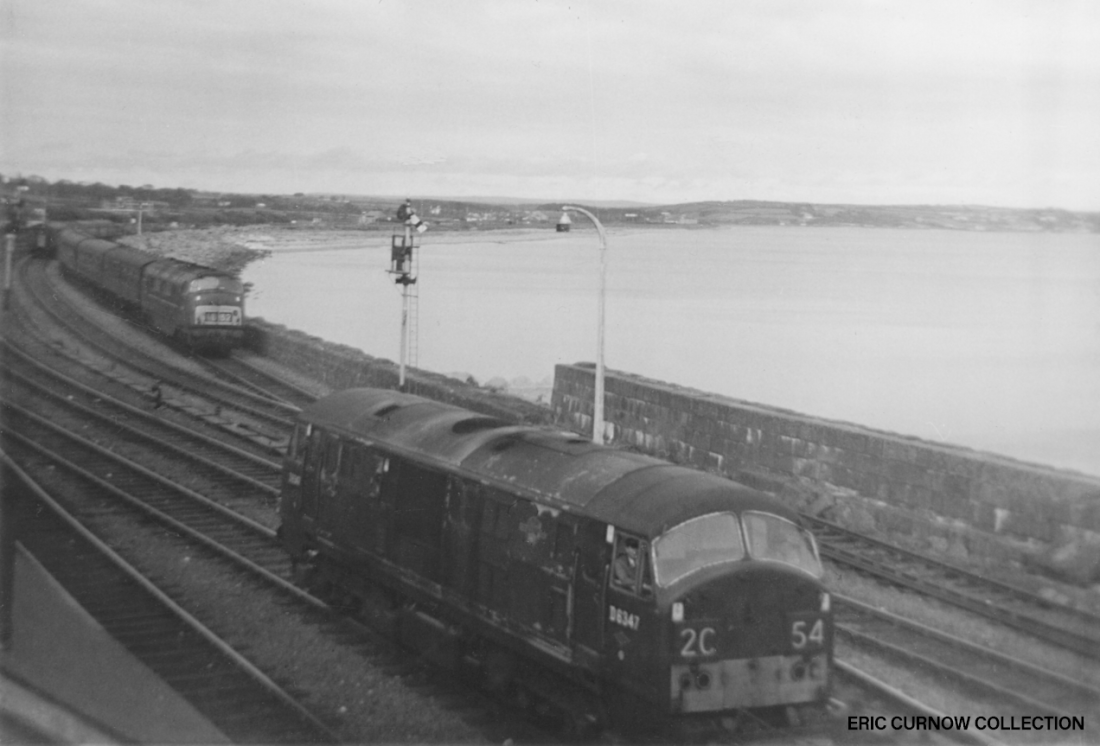
It seems surprising that the ‘Warship’ in the Sea Siding has “got the road” according to the signal as D6347 seems to be crossing before it, blocking the way. The ‘Baby Warship’s’ driver is smartly dressed in BR uniform with tie and cap, responsibly alert as to the road ahead. 6407##A01-PNZ-D6347-LIG_D
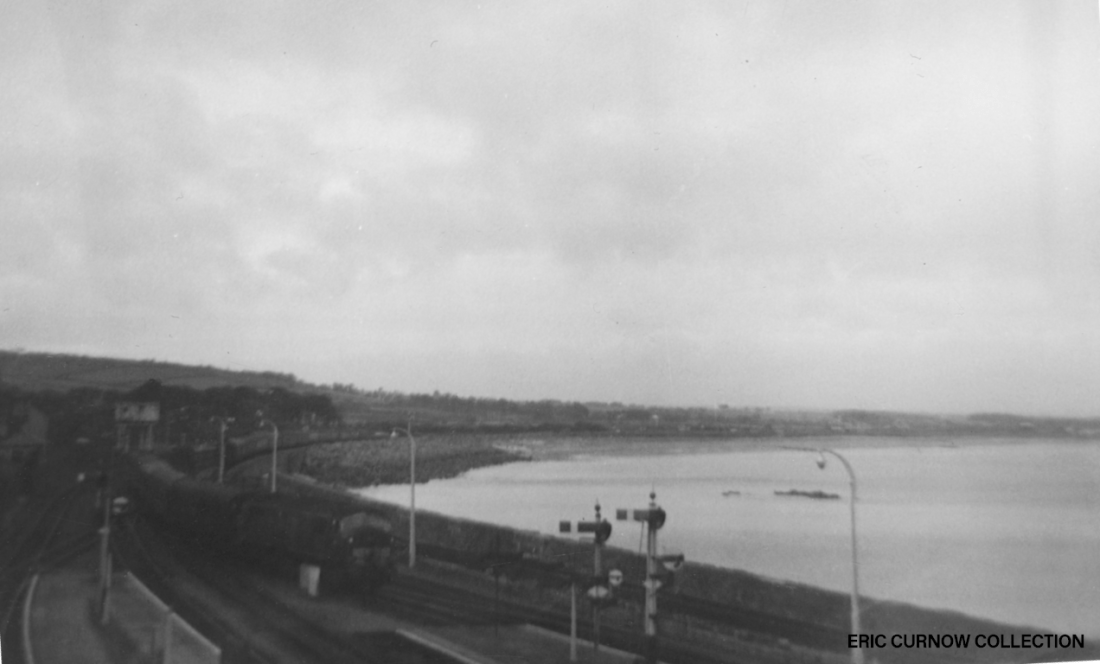
In the gloom of early evening, a ‘Type 2’ D63XX with a goods van train passes into the station yard at Penzance. The sea behind is at half tide and although calm, laps up with some vigour onto the rock armour at the closest end of Eastern Green. 6407##A02-PNZ-D63##-GDS_D
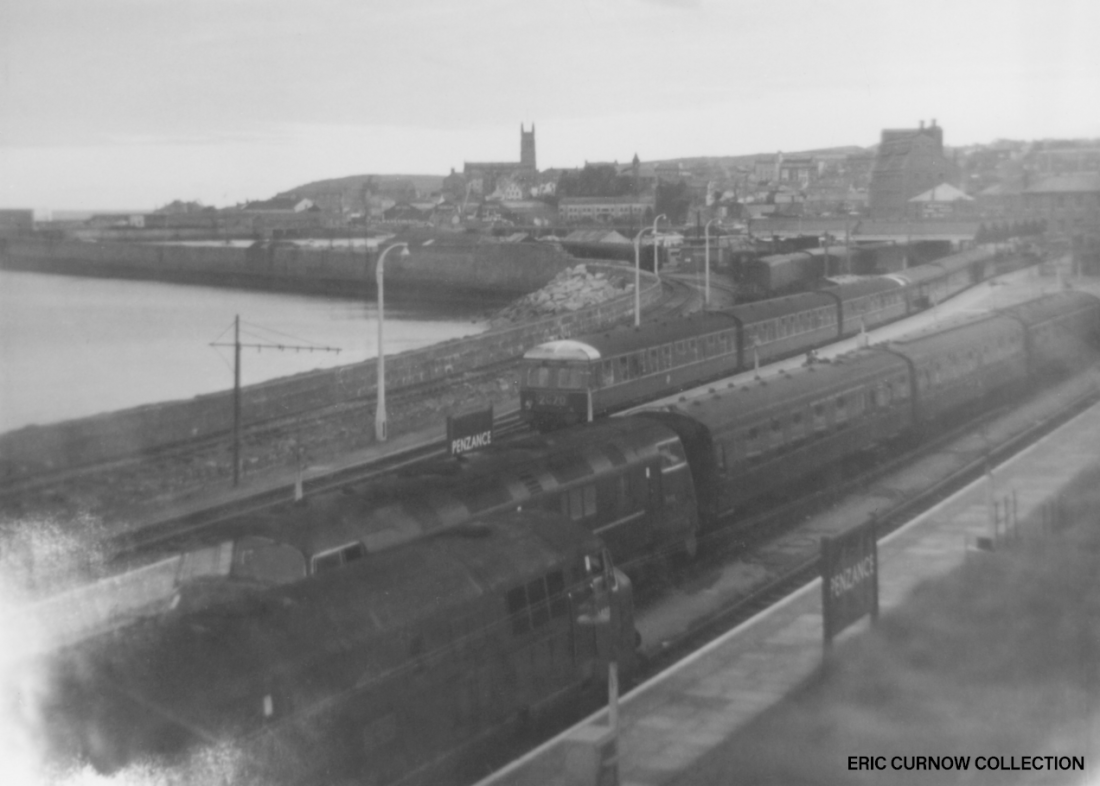
A scene in July 1964 where an original D6XX ‘Warship’ is awaiting release to the Sheds and a successor, D8XX, ‘Warship’ heads an up service of maroon stock. In the background there is a ‘Swindon’ DMU set or two and vans under the goods awnings. 6407##A06-PNZ-D_LCO-VI_SW

D856 “TROJAN” passes the photographer on the ‘up’ line at Chyandour, with Sloper’s Siding before it – Ponsandane woods reflected in one of the bodyside windows. The appearance of the 4-holed wheels of the ‘Warships’ and ‘Westerns’ often caught my attention. 6407##A10-PNZ–D856-LIGHT

D816 “ECLIPSE” rumbles over the ‘Three Tunnels” bridge en route to the Sheds – its appearance a disgrace to British Rail. The louvre hatch without a bottom sill next to the white warning ‘Danger. Overhead live wires’ sign is where access to the tank for steam heating is made. 6407##A11-CHY–D816-LIG_Uc6
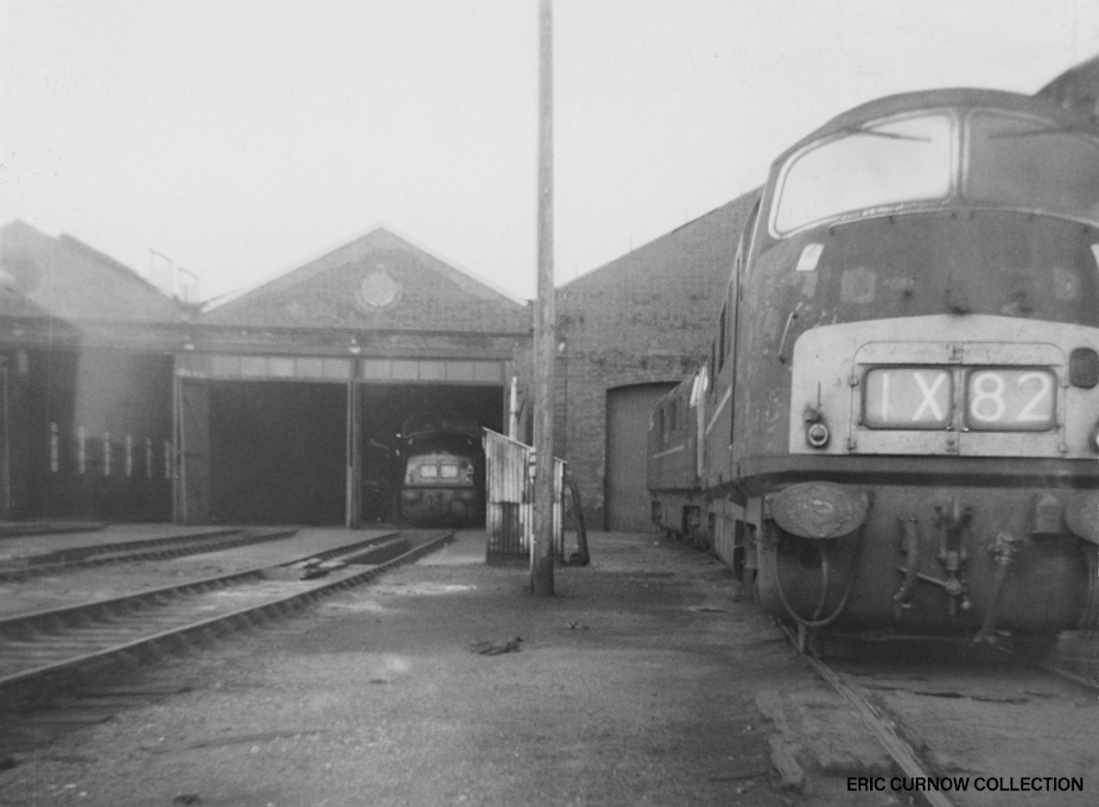


Three sequential views of a ‘Warship’ leaving Long Rock shed, passing the sister locos plus a D63XX, hint at the tolerance rail staff had at Penzance depot for genuine railway enthusiasts, not likely to do anything stupid or malicious. Good views of a fueling point, too! 6407##A12,13&14-LRK–D8##-PARKD


The nameplates of North British Locomotive Company-built D853 “THRUSTER” and Swindon-built D824 “HIGHFLYER” ‘Warships’ contrast a little in appearance as the latter seems to have a glossy sheen to it – probably repainted more recently. 6407##A15-PNZ–D853&D824-NMPLT
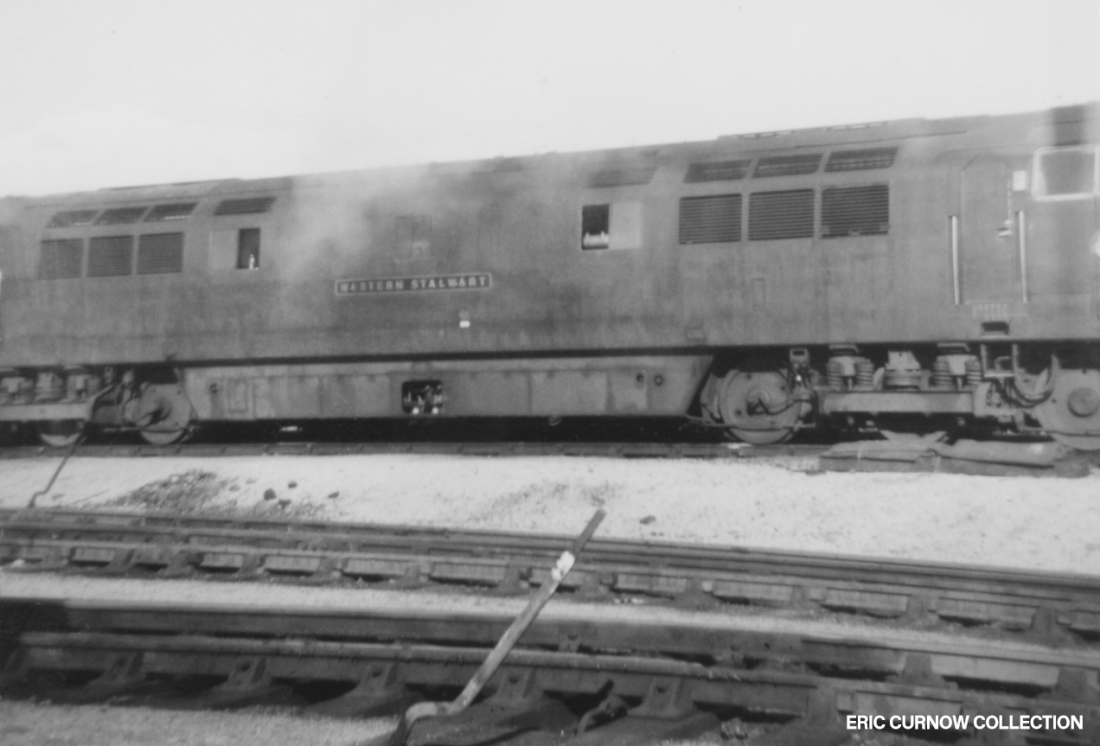
Although ‘Warships’ seem to have been the predominant movie power to Penzance at this time, ‘Westerns’ also made their appearance. D1006 “WESTERN STALWART” trundles to duties, its bodyside showing the horizontal lines of welding to the superstructure behind. 6407##A17-LRK-D1006-LIGHT

As a bit of associated personal memorabilia, this image shows “ESSO LYNDHURST”, a frequent visitor to Penzance, moored with a sister ship in the inner harbour. These ‘coasters’ plied around the coast delivering fuel to various ports. In its shadow is the Pilot Boat that my dad – as Pilot Boatman for a while – used in ferrying the pilot between ship and shore. 7####HE01-PEN-VESSL-MOORD

In August 1974, D1056 “WESTERN SULTAN” passes Dolcoath siding between Roskear and Carn Brea with a many-carriaged down service in late afternoon. In the siding to the left milk tanks were filled from road tankers and hoses, and up trains from Penzance or St Erth would stop beyond the white gates, reverse in and couple up before continuing eastwards. 7406##A04-CBN-D1056-PAS_D

Nearing Chacewater, D1026 “WESTERN CENTURION” slows for the sharp bend before the former station, viewed from the over bridge west of the station. The space to the right of the tracks is where the former Perranporth branch line once lay, now encroached by gorse, and before the loco is a hopper for ballast tamping by gangs who walk the trackbed. 7406##A03-CWR-D1026-PAS_U

The “gem” of my collection so far, I think, as a double headed express pulls away from Penzance Station in the early 1900s with steam and smoke spreading everywhere. The original signal box – rarely seen in remaining photographs – is nearly opposite single line token equipment, and a brave man ascends a precarious ladder to the cable runs on the wall. 10####A02-PNZ-S_LCO-PAS_U

7921 “EDSTONE HALL” drifts into Gwinear Road Station with a Penzance-bound passenger service of mixed stock. In the foreground is track maintenance equipment and behind is a rake of cattle vans, by this time used for “broccoli’ grown prolifically locally. To the right beside the loading gauge is a gas wagon, providing fuel for remote locations “off the grid”. 60###AN01-SAU–D825-PAS_U

Bright sunshine casts shadows on the platform that a freight train is drawing away from as D825 “INTREPID” waits opposite for a restart at St Austell Station in the early 1960s, The locomotive has yet to receive its yellow warning panel – that I personally think detracted from its appearance – and heads maroon coaches. The ‘parachute’ water tower still remains behind. 5####CZ01-GWI-S_LCO-PAS_D
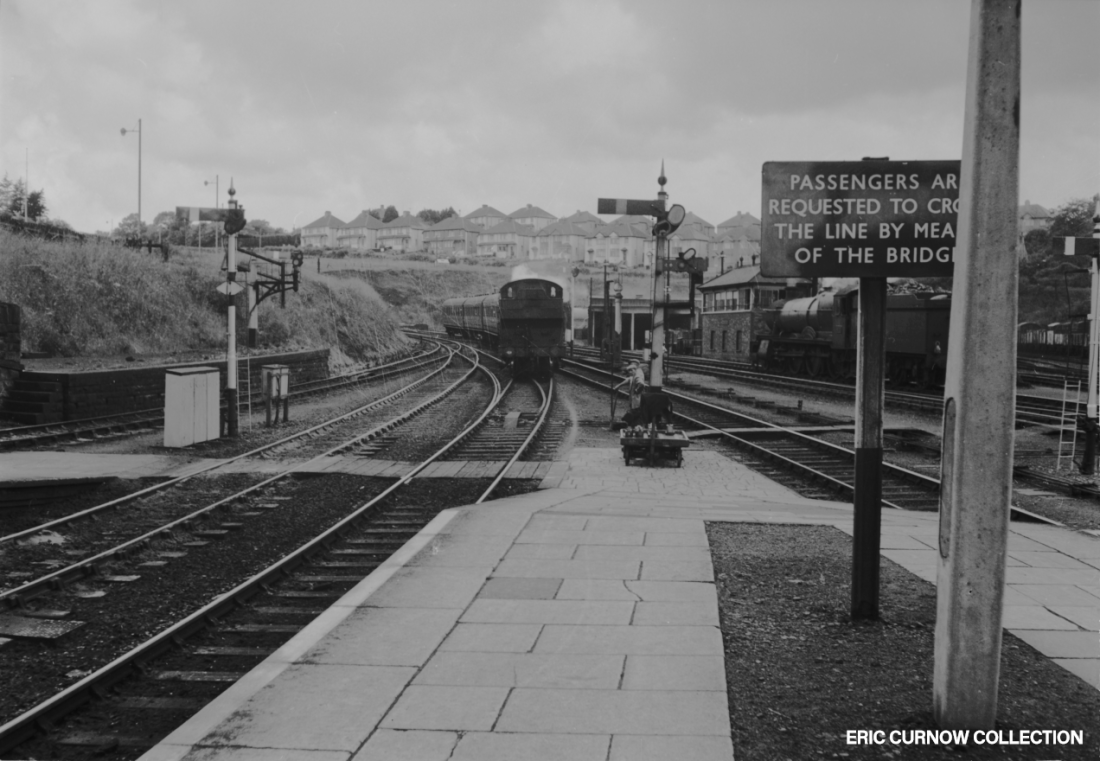
A local train, possibly from Chacewater judging by its arrival platform, arrives at Truro from the west, as a 2-6-0 named loco waits near Truro West Box. The signals have yet to all be replaced with BR standard versions, though a concrete lamp standard shows more clearly modernisation is in progress. Behind lies Truro depot, with its new DMU facility. 5####DA01-TRU-s45XX-PAS_U

Well-run-in HST set 253007 is at Penzance, Platform 1, awaiting departure on a grey afternoon, where only its yellow front brightens the scene. The granite wall sprouts buddleia that is reflected in the grime on the locomotive’s front end – the raised curved panel behind the cab roof was an experiment to try to minimise exhaust stains from obscuring the windscreen. 8####BW01-PNZ-2~007-PAS_U

Both cab windows of 50038 “Formidable” are occupied by staff as the engine pulls away west from Hayle over the viaduct in the Summer of 1978. In the background are the “Towans” – the huge sand hills between the town and the sea – and the chimneys of the former coal-fired power station. A refuge for track workers can be seen above the right hand pillar. 780713A01-HYL-50038-PAS_D

On 24th April 1960 5538 simmers while the crew rest on a station seat beside it at Truro’s bay platform with a three coach train for Falmouth. Shadows are cast by the soft sun, and the beautiful granite wall beside intimates the rising incline of the road behind it with a sloping course of slabs, cutting across the horizontal courses. The rest of the station is deserted. 600424A01-TRU-s5538-PAS_O

Passengers board the branch service to Truro at Falmouth Station on 24th April 1960, with 5538 surrounded by buildings and other facilities soon to be “rationalised” away – only the platform on the left with its curved top awning were to survive. The jibs of dockyard cranes are discernable in the background, as are a plethora of framed signs on the station wall. 600424A02-FAL-s5538-PAS_I

50016 powers through the site of Chacewater Station with a Mk1 Midland service in August 1974. The former up platform beside the loco has been bulldozed into a heap of debris, with vegetation thick upon it, and on the down platform, the station building and signal box, remain, and behind, the Blue Circle cement terminal tower forms a prominent landmark. 7408#AB01-CWR-50016-PAS_U